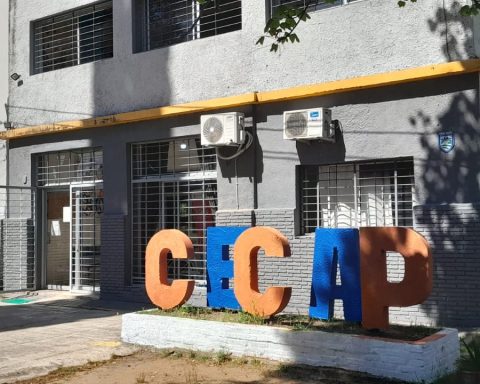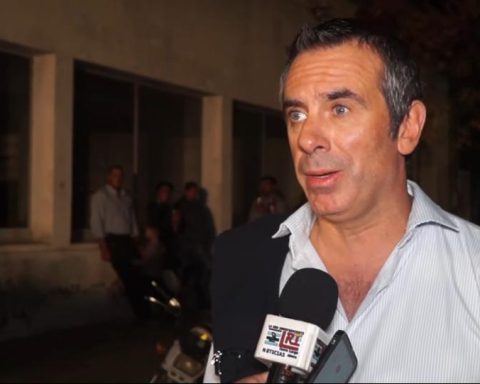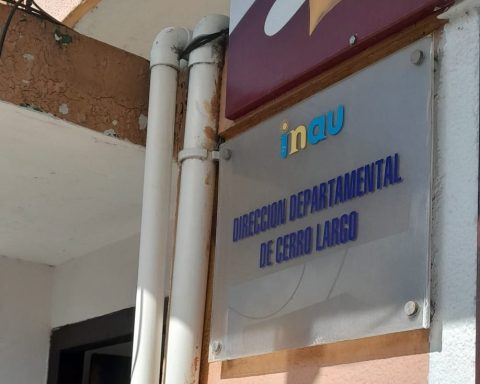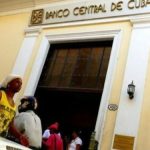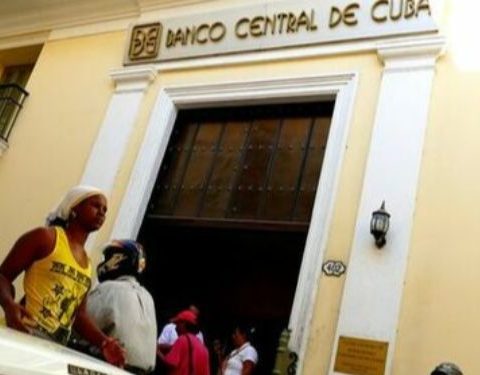In the next few days, the official inflation data for January will be published, and although the expected figure of around 3.8% will not be a surprise to anyone,The figure will mean a new political impact just when the government is promising an agreement “without adjustment” with the International Monetary Fund (IMF).
to the minister Martín Guzmán is finding it increasingly difficult to convince —both his Peronist allies and opponents— that the upcoming plan will be painless. To begin with, because he wants the unions to be managed with a readjustment guideline of 40% for the year, when all economists believe that inflation will be between 55% and 60%.
Last year, the minister had managed to keep the unions within the range requested by the government, but when it became clear that the official projections would be overwhelmed -something that happened already in the middle of the year-, the clauses were put in place revision, which led to the largest guilds having adjustments above 50%.
Judging by the statements that the union leaders are making, it seems difficult for the second consecutive year to trust the official projection: all companies are already getting used to the idea of salary adjustments of 50%.
However, Guzmán continues to demand a social pact that moderates prices and wages, as a way of containing inflationary expectations for this year.
This need becomes more pressing, above all, because there will be two classic “anchors” that this year will not be able to be used: the dollar and the rates of public services. During 2021, the evolution of the exchange rate had an average of 1% per month, against inflation that averaged 3%, so that “inflation in dollars” ended up being 25% in the year.
And subsidies for energy services and transportation grew to represent 3% of GDP. Both issues were objected to by the IMF, which considers them an unsustainable distortion in the economy.
To make matters worse, they also asked that the interest rate, which was strongly negative in real terms, rise to match the rate of inflation.
This makes Guzmán, faced with the loss of those anchors, try to make the reference for the market in the agreement on prices and wages, an issue on which economists are widely skeptical.
In fact, the forecast is that for the first four months of the year, inflation will be around 17%, with the aggravating circumstance that the food sector is running faster than average, a fact that the unions assert at the time of the negotiations. .
In this framework of tension, not even the good news of the record price of soybeans and corn allowed for great celebrations. First, because due to weather setbacks, production will be less than last year. But, above all, because the positive part of the income of “agrodollars” is opposed by a greater pressure of “imported inflation”.
Between tariffs and arm wrestling
The government is finding it hard to muster the votes to pass the deal with the IMF. He receives criticism both from the opposition and from hard-line Kirchnerism. Some view the fact that there will be no structural reforms with mistrust and fear that fiscal balance will be sought through a tax on the private sector. The others suspect that behind Guzmán’s promises about an “agreement without adjustment” will come a classic devaluation and tariff plan.
Although it is likely that approval will be achieved in Congress at the last minute —because none of the forces wants to appear as if they pushed the country into a new default—, these criticisms set the tone for the climate in Argentina: everyone believes that a new adjustment will be inevitable, and a tug-of-war begins to see which sector of society will pay the highest bill.
In recent days there has been controversy over a proposal of the secretary of energy —conducted by officials related to Cristina Kirchner— that establish rate increases segmented by neighborhoodyes Thus, an inhabitant of Palermo will have to pay bills with increases of more than 100% while one from Almagro or Caballito will only have a 20% increase.
The criterion was established based on the value of the square meter in Buenos Aires, but was heavily criticized by experts, who said that it was a basic and primitive proposal, which does not take into account particular situations such as that of tenants or retirees. .
JUAN MABROMATA / AFP
The toughest Kirchnerism turned its back on the agreement with the IMF announced by President Alberto Fernández.
For Guzmán, the worst of all is that if the regime is approved under these conditions, it will barely allow him a marginal saving on subsidies, when his aspiration is to cut 1 and a half points of GDP. So the fight over rates has only just begun, to the concern of Cristina Kirchner, who is convinced that Mauricio Macri lost the 2019 election due to the rate hikes implemented during her administration.
Another fight that began to be outlined is that of the expenses to be paid between the central government and the provinces. The mayor of Buenos Aires, Horacio Rodríguez Larreta, denounced an “attack against the city” by Alberto Fernández, because the national government will no longer pay the subsidy for 32 bus lines in Buenos Aires, which implies a cost of 130 million dollars.
For Rodríguez Larreta, who dreams of running for president in 2023, it is a delicate situation, because on the one hand he complains that the national government will force an increase in the ticket in the capital, but on the other hand he does not want to appear as a defender of Buenos Aires privileges, given that in cities like Córdoba, Rosario and Mar del Plata the ticket costs triple.
Functional inflation and credit hoarding
Meanwhile, the part that Guzmán talks about the least, but which forms the basis of his plan, is exchange rate and monetary policy. In In recent weeks, an acceleration in the slide of the dollar has begun to be noted.
If the current rate of devaluation is extrapolated for the entire year, it would imply that the dollar would rise by 40%, coincidentally the same number that officials are suggesting to union leaders as a reference value in salary negotiations.
This implies that the government is trying to keep salaries —especially those in the public sector— from growing in dollars. And, on the other hand, tax collection will evolve along with inflation, which implies that on that side there would be a reduction in the fiscal cost of state salaries.
At this point, there are economists who believe that Guzmán purposely underestimates his inflation projections, in order to get the most out of the savings produced by the “liquefaction”. Or, as is often said in the jargon of economists, to maximize the collection of inflation tax.
One of the most explicit analysts in this regard was Carlos Melconian, who stated that “the government needs inflation to do the dirty work of liquefying public spending that does not dare to cut.” And based on that statement, he insinuated that there is no real decision to stop the inflationary rhythm, because that “would create a problem.”
For his part, Jorge Vasconcelos, chief economist of the Mediterranean Foundation, put numbers to Guzmán’s tactics: “With two thirds of primary spending indexed, every 5 points of decrease in inflation triggers an increase in expenditures of 0.3 points of GDP”.
This implies that if the official goal of lowering inflation to the 40% range were met, that would add an extra fiscal pressure of 0.7 points to the minister, an enormous figure if one takes into account that Guzmán publicly celebrated that the IMF he had only demanded a tax cut of half a point.
In conclusion, more and more people are convinced that Guzmán looks sympathetically at inflation above 50% because it will be functional —perhaps essential— for him to fulfill his commitment to bring the fiscal deficit to 2.5% of GDP.
Another reason for criticism comes from small businesses, who say that the minister is going to monopolize all the pesos available in the financial system and will make credit more expensive for the private sector.
Guzmán promised the IMF that he would drastically reduce his dependence on Central Bank assistance. Speaking in numbers, that aid would go from 3.7% of GDP to 1% in just one year. The way to achieve this is to take on debt in the local market, in pesos.
The estimates of the companies is that this will put pressure on the reference interest rate to 44%, which will leave the SME segment out of the market.

